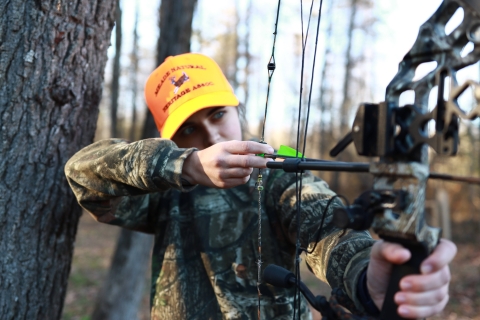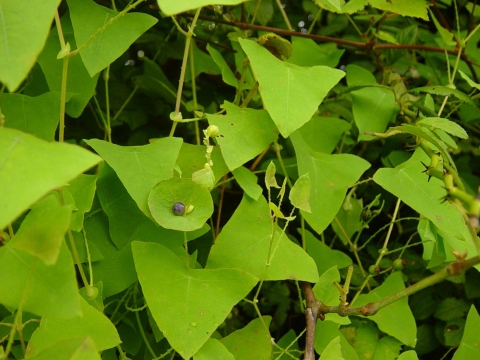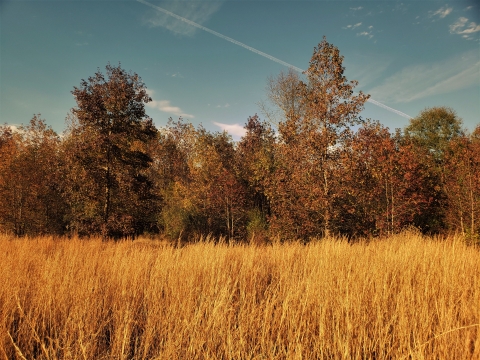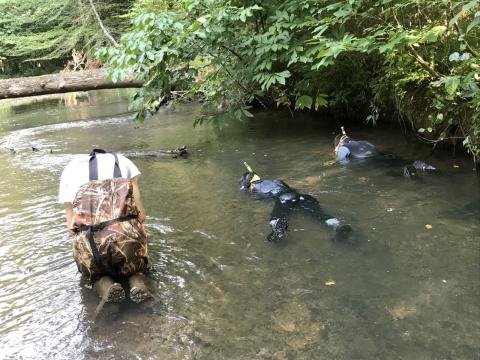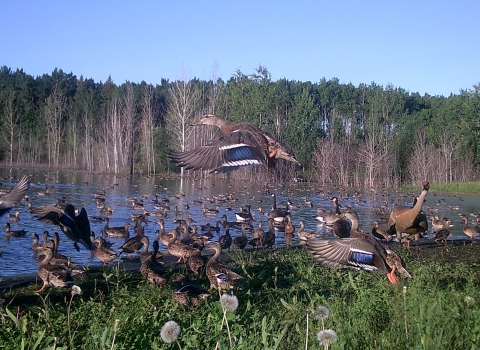What We Do
Refuges deploy a host of scientifically sound management tools to address biological challenges. These tools span active water management to wilderness character monitoring, all aimed at ensuring a balanced conservation approach to benefit both wildlife and people. At this field station our conservation tool box includes: |
Management and Conservation
Hunting
Hunting helps to maintain a healthy white-tailed deer population and safeguard forest health and species diversity. Thriving plant and animal communities require balanced predator-prey relationships. When large predators are absent from an ecosystem, imbalances develop. The resulting shortages of appropriate food, shelter and space negatively impact all, from deer to turtles, to rabbits and songbirds. Hunting is one management tool that can help resolve those imbalances.
Mowing and Prescribed Burns
Mowing is often used as a management tool to control invasive plant species, and to maintain nesting and foraging habitat for wildlife in meadow areas. Selective mowing, coupled with the use of prescribed burns, helps regenerate native plant species. Prescribed burns are routinely scheduled to improve soil health, control invasive species invasive species
An invasive species is any plant or animal that has spread or been introduced into a new area where they are, or could, cause harm to the environment, economy, or human, animal, or plant health. Their unwelcome presence can destroy ecosystems and cost millions of dollars.
Learn more about invasive species , and promote native plant and animal diversity.
Invasive and Non-native Plants Management
Controlling non-native invasive plants is not only a good thing to do, but essential for native plant communities upon which our wildlife and natural landscapes depend. Fire and mowing must often be followed up with selective herbicide treatments in order to kill the invasive plants at their roots and prevent re-sprouting or to selectively preserve adjacent native plants.
Our Projects and Research
Oak-Pine Savanna Restoration In the eastern United States, savannas are a less common habitat type in the natural landscape. Dry, sandy, well-drained soils can produce grassy, open woodlands, which can be found in the northwest region of Patuxent. The main natural process that maintains these savannas is fire resulting from lighting strikes. Indigenous people living in the area also lit fires to maintain these open grasslands. Until recently, the savanna areas of the refuge were choked with Virginia pines, forming an ecological desert. Using a combination of management practices including: prescribed burns, timber harvesting, and herbicides, the Virginia pines were removed. In their place grasses, oaks, and pitch pines returned to support the native flora, birds, and pollinators that once thrived here. Endangered Yellow Lance Mussel Survey The Patuxent and Little Patuxent Rivers both run through the refuge. The rivers have several shallow, gravelly runs which are shaded by mature forest keeping the water cool. These are conditions preferred by most mussel communities. However, little information is known about what mussel species occupy these river stretches and where they are located. Mussel surveys in rivers are labor intensive and time consuming. Of particular interest is that the endangered yellow lance mussel as a small population does exist upriver from the refuge. During the summer of 2021, the refuge partnered with the Maryland DNR, USFWS' Chesapeake Bay Field Office and Northeast Fishery Center, to conduct environmental DNA (eDNA) analysis of water samples taken at various choice locations. This will be followed by physical searches during the low water season. |
On September 24, 2024, the Director of the U.S. Fish and Wildlife Service approved a Land Protection Plan (LPP) to establish an acquisition boundary for the Southern Maryland Woodlands National Wildlife Refuge. The FWS Northeast Region Division of Realty settled on a 31.38-acre parcel in Nanjemoy, Charles County, Maryland, to formally establish the refuge on December 5, 2024.
Final...



